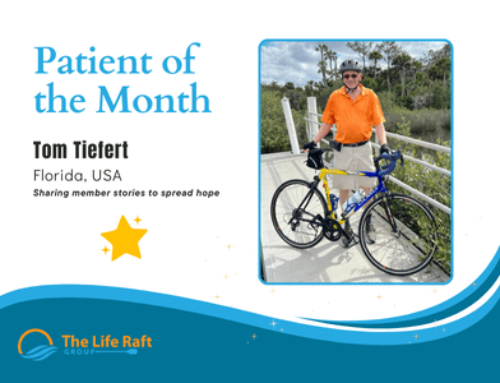Recently, concerns about exposure to radiation during scans have stirred significant discussion in the LRG email community. Although this is a decision that must be made between each individual and their treatment team, it is important to have a strong knowledge base when approaching the issue.
What is an MRI?
MRI stands for magnetic resonance imaging. Using a strong magnetic field, radio waves and a computer,detailed pictures of tissue, bone and other internal structures are produced. A doctor may request that a contrast material be utilized during the process; this may be either oral or intravenous. It is possible that an allergic reaction could occur from these substances. Kidney disease may also limit the use of contrast materials. The presence of some metals in the body (such as found in some defibrillators and other implants) may preclude the use of MRI’s.
Benefits:
- No exposure to radiation.
- May be able to better characterize and identify abnormalities and other focal lesions.
- May enable the detection of abnormalities that could be obscured by bone in other techniques.
- Contrast materials used in MRI’s are less likely to cause a reaction than contrasts used in other imaging techniques.
Risks:
- Patients that experience claustrophobia may require a sedative.
- Metals can interfere with the quality of the scan.
- Patients must remain perfectly still to ensure high-quality images. Breathing and bowel motion may cause artifacts or distortions when examining the chest, abdomen and pelvis.
- MRI’s are more expensive and take longer to perform than other techniques.
What is a CT scan?
Computed Tomography (CT) is a noninvasive test that may be used to diagnose and monitor many diseases. CT scans provide higher quality images of internal organs, tissue and blood vessels than x-rays. Specialized x-ray equipment produces multiple images of the body, called “slices”. A computer then joins the images into cross-sectional views that may be printed or viewed on a monitor. Once again, a contrast material may be used during the procedure. A patient may be asked not to eat or drink anything for several hours before the exam. It is possible for some patients to have an allergic reaction to the contrast material since it contains iodine.
Benefits:
- High quality images may eliminate the need for more invasive testing.
- Images of bone, soft tissue and blood vessels may be produced simultaneously.
- Images are produced quickly and easily.
- Scans can be performed regardless of the presence of any implants.
- CT scans are less expensive than MRI’s.
- Scans are less sensitive to movement than MRI’s.
Risks:
- Exposure to radiation, although small, does occur. Cumulative exposure may be a concern.
- Allergic reactions are more common with the contrast materials used in CT scans, however they are still rare.
What is a PET scan?
Positron emission tomography, a PET scan, is a type of nuclear medicine imaging. This means that a smallamount of radioactive material (called a radiotracer) is used during the exam. PET scans do not provide pictures or images of structures. The pictures produced by PET scans reflect the levels of chemical activity in different areas. Areas of greater intensity, or hotspots, indicate higher concentrations of the radiotracer and greater chemical activity.
The radioactive material critical for this type of imaging may be swallowed, injected or inhaled. This material collects in specific areas of the body and emits gamma rays, a type of energy. This energy is detected by a special device and a computer producing specialized pictures that demonstrate both function and structure of organs and internal structures.
PET scans measure blood flow, oxygen use and sugar metabolism. In GIST, the measurement of metabolism may provide a gauge of tumor activity or growth or response to treatment. Indolent GISTs may not be visualized accurately on PETs.
Benefits:
- The unique images produced provide information that may not be attainable using other techniques.
- Response to treatment may be measured.
Risks:
- The use of a radiotracer means exposure to radiation. It takes approximately 24 hours to leave the body.
- Allergic reactions may occur to the radiotracer.
- Diabetics may need to take special care when considering PET scans.
- Scans are time consuming and expensive.
- Resolution may not be as clear as in CTs or MRIs.
- Timing and scheduling are important to ensure accurate results.



